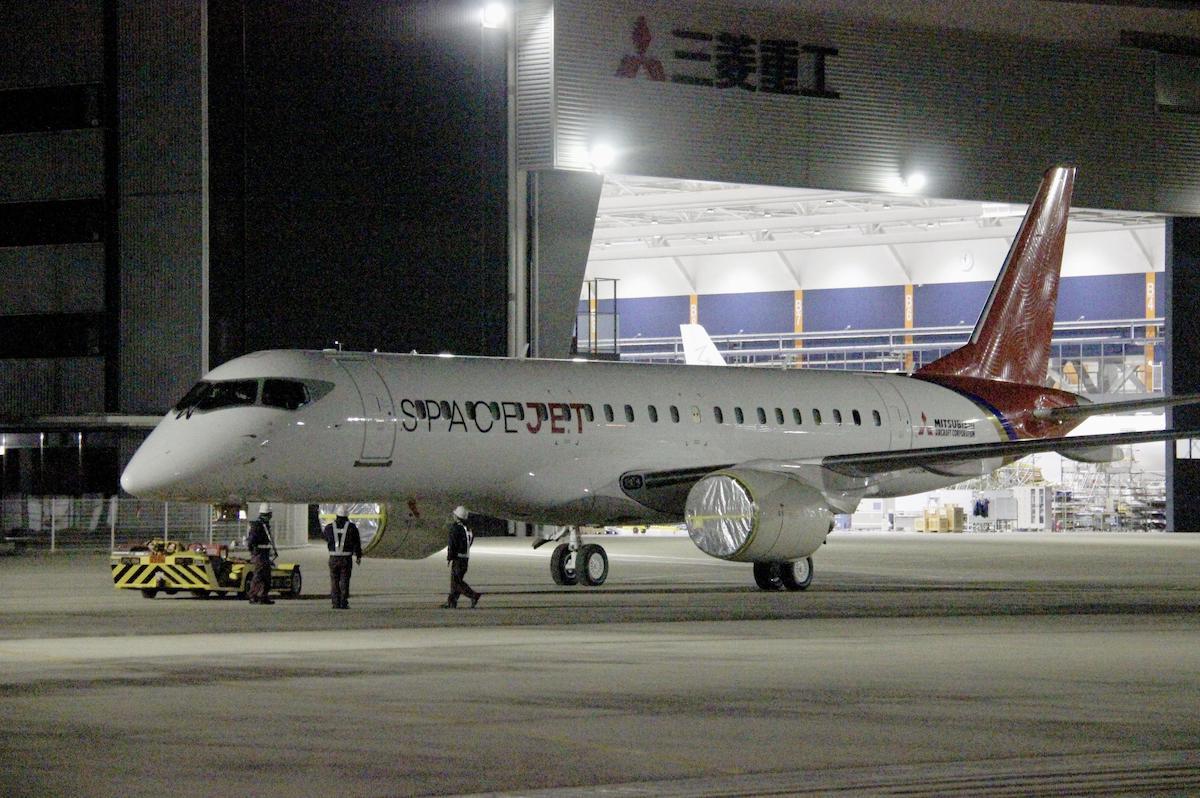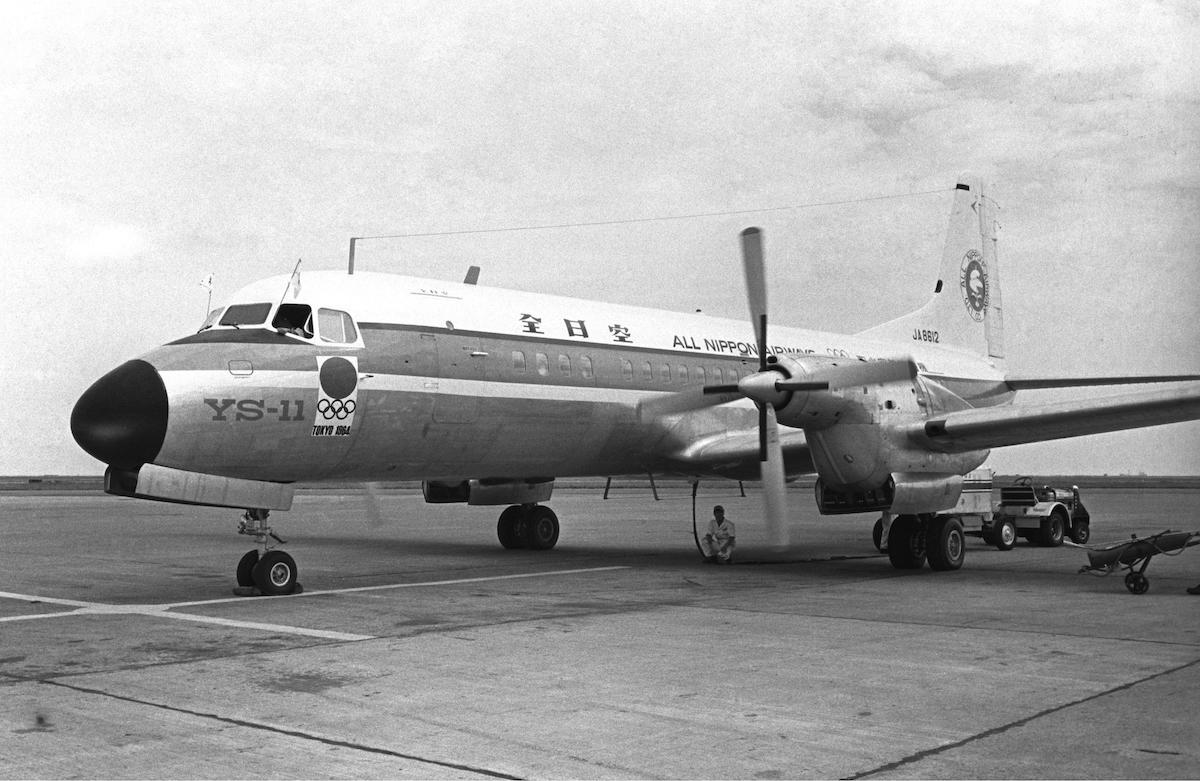Daily Memo: Mitsubishi’s SpaceJet Decision Ends Japanese Civil OEM Ambitions

Mitsubishi Heavy Industries confirmed the end of the SpaceJet program on Feb. 7.
In 1962, the Nihon Aircraft Manufacturing Corporation (NAMC) YS-11 took off for its first flight. The 60-seat Rolls-Royce Dart-powered turboprop was the first Japanese civil aircraft after World War II, and the hope was for it to be the first of many.
A little over 50 years later, in 2015, what was then called the Mitsubishi Regional Jet (MRJ) took off for its first flight having been launched eight years earlier. But another eight years on and Mitsubishi Heavy Industries has finally pulled the plug on the project, officially stating Feb. 7 that it will not restart development of the aircraft.
The loss to Japanese industry and government is more than just the $7 billion funneled into the ill-fated program. If there was ever a hope for the country’s industry returning to commercial aircraft manufacturing as the OEM, that has now gone. It is inconceivable that Japan would attempt to develop a large commercial aircraft again in the coming decades.
The SpaceJet—as the MRJ has been called since 2019—was not necessarily bound to fail. In 2007, large regional jets were in high demand. While the Bombardier CRJ was unpopular with passengers, Embraer had just proven that it is possible to successfully bring a new aircraft design to the market with its E-Jets.
Of course, there was a major difference between Mitsubishi and Embraer. The Brazilian manufacturer had slowly built expertise in the design and integration of aircraft—the Bandeirante, the Brasilia and later the ERJ145 were all necessary steps enabling the company to eventually build relatively large and complex aircraft like the E-Jets and today’s E2 series, not to forget the KC-390 in its defense business.
Mitsubishi, one of the three Japanese “Heavies” along with Kawasaki and Subaru, has been part of the global commercial aircraft manufacturing scene in its role as a major supplier to Boeing, but there has not been a continuous history of aircraft manufacturing since the start of YS-11 production, which ceased in 1972.

Sure enough, Mitsubishi and its partners paid dearly for their lack of experience. Initially due for first delivery in 2013, the aircraft was delayed six times. Numerous design flaws were discovered during development and even after the first flight, forcing highly expensive extra work and a restart of certification leading to multi-years delays. Over time, the project lost credibility.
And the market had moved on. The idea that one would successfully introduce an all-new large regional jet became more and more unrealistic, particularly with environmental concerns gaining a lot more importance. Embraer is even struggling to find sufficient interest for a new turboprop of similar size, which would by definition be a lot more fuel efficient than the SpaceJet could ever be.
The fact that the SpaceJet will not be built looks like good news for Embraer. It remains the only internationally relevant current manufacturer of large regional jets, discounting Comac’s ARJ-21 and with the Airbus A220 moving more into mainline fleets.
In theory, a monopoly is a comfortable position to be in, but the big-picture trends must also be a huge concern for Embraer and the long-term prospects of the E2. The aircraft has recently seen some solid sales successes for sure, but overall it has not outgrown the niche of the E1 as Embraer had hoped. The shift to “right-sizing”—putting smaller aircraft on thin routes served by mainline jets—has to a large extent still not happened, even though, on paper, the concept makes a lot of sense. And there does not seem to be a growth story beyond the refreshment of the admittedly substantial fleets of E1s that will come up for replacement in the next 5-10 years.
Some of what has hurt the SpaceJet affects Embraer, too. Now that the industry seems to finally have woken up to the idea of tackling its environmental footprint, research is going into new (propulsion) concepts rather than conventional designs. Meanwhile, the pilot shortage in the U.S. regional market and scope clauses are not going away.
Given the slow pace of sales in the early years of the E2 program, Embraer has suggested that it may have launched the aircraft too soon as the in-service fleet of E1s had not come up for replacement yet. While that is certainly true, Embraer is also lucky to have made the step of introducing the second generation when it did. These days, such a move would no longer be possible.
Some parallels can also be drawn between the SpaceJet and the YS-11, even though the turboprop made it into revenue service with 182 aircraft built over the life of the program. Launch customers for both aircraft were Japanese. Then, international success depended largely on penetration of the U.S. domestic market.
Piedmont Airlines became the largest international operator of the YS-11 with 21 aircraft. SkyWest and Mesa had even ordered 150 SpaceJets at some point. When Piedmont’s enthusiasm for the aircraft remained a singular view, the prospects of the YS-11 program deteriorated. As for the SpaceJet, getting to that stage would have been considered a great success.
